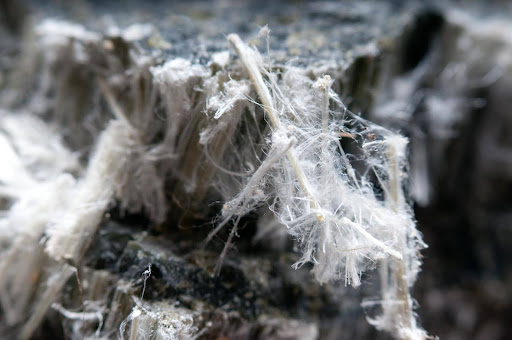Renovating your home is a rewarding project. The idea of transforming a space with your own two hands is exciting and can seem like a great way to save money. But what happens when your project uncovers an old, fibrous material you suspect might contain asbestos? Your mind races with questions: Is it asbestos? How dangerous is it? Can I test it myself to save on costs? This is where the DIY spirit must take a back seat to safety and professional expertise. This article is for home and business owners in Melbourne who are facing this dilemma.
We will investigate the grave dangers of attempting asbestos testing at home, detailing the catastrophic risks that far outweigh any perceived cost savings. We will explain the legal and ethical reasons why engaging a professional for a comprehensive asbestos analysis is not just an option but the only safe and responsible choice. This is about more than just a test; it is about protecting yourself, your family, and your investment from a hazard that can have life-altering consequences.
The Unseen Threat: Unpacking the Hidden Dangers of Asbestos
Before even considering touching a material you suspect might contain asbestos, you must understand why it is so dangerous. Asbestos is a naturally occurring substance comprising of fine, strong fibres. Because of its incredible resistance to heat, fire, and chemicals, it became a go-to material for builders across Australia for much of the 20th century. Its use was so widespread that it is estimated to be present in over 3,000 building products.
What makes asbestos so dangerous are the microscopic fibres it contains. When asbestos-containing materials (ACMs) are disturbed, the fibres become airborne. They are so small you cannot see, smell, or taste them. When inhaled, these needle-like fibres can become lodged deep within the lungs, where they can cause severe diseases decades after the initial exposure. These diseases include:
- Mesothelioma: A rare but aggressive and almost always fatal cancer of the lining of the lungs or abdomen.
- Asbestosis: is a chronic, non-cancerous lung disease that causes scarring of the lung tissue, leading to severe breathing difficulties.
- Asbestos-Related Lung Cancer: A heightened risk of lung cancer, especially in individuals who also smoke.
The long latency period of these diseases — often taking between 20 to 50 years to manifest—means that a single, careless action today could lead to a devastating diagnosis far in the future. This is why a simple visual inspection is utterly inadequate. Only a professional asbestos testing service can confirm the presence of asbestos and, crucially, assess the level of risk.
The Dangers of Asbestos Testing at Home
The promise of a DIY asbestos test kit might seem appealing, but the small amount of money you save by attempting to collect a sample yourself pales in comparison to the immense risks you introduce.
- Uncontrolled Fibre Release: The very act of collecting a sample—scraping, cutting, or drilling—is the most hazardous part of the entire process. Without a professional’s specialised equipment and training, you are almost certain to release a plume of deadly fibres into the air. This immediately contaminates the area, creating a health risk for anyone present.
- Widespread Contamination: Unlike professionals who create a sealed-off work area using plastic sheeting and negative air pressure, a DIY attempt lacks containment. The airborne fibres can settle on floors, furniture, and personal belongings. You can unknowingly track these fibres on your shoes and clothes, spreading the contamination throughout your home, car, and potentially to your loved ones.
- Inaccurate and Unreliable Results: A professional assessor knows where to look for asbestos and how to collect a representative sample. They understand that ACMs are not always uniform and that asbestos might only be present in certain layers or specific adhesives. An amateur could easily take a sample from a non-asbestos part of a material, leading to a false negative. This gives you a dangerous and false sense of security, which could prompt you to continue with a renovation, unknowingly disturbing a much larger amount of asbestos.
- The Problem of Improper Disposal: In Victoria, strict legal requirements exist for the correct disposal of asbestos waste. This includes double-bagging, labelling, and transporting the waste to a licensed disposal facility. An untrained individual may not follow these protocols, leading to legal fines and environmental contamination.
The choice becomes clear when you weigh these risks against the minimal cost of a professional asbestos testing service. There is simply no safe way to conduct asbestos testing at home.
The Professional Approach: A Methodical and Safe Asbestos Analysis
Engaging a professional for asbestos testing in Melbourne is the only safe and responsible path forward. Professionals follow a strict, methodical, and legally compliant process designed to protect you, your property, and the environment from harm.
The professional process for an asbestos analysis typically includes these crucial steps:
- Initial Site Assessment: The process begins with a comprehensive inspection of your property by a qualified asbestos assessor. They use their expertise and knowledge of historical building practices to identify all potential ACMs and assess their condition. They will look in common locations like ceilings, walls, roofing, and flooring and in less obvious places like behind skirting boards or fuse boxes.
- Safe Sample Collection: The professional will arrive equipped with full personal protective equipment (PPE), including a P3 respirator, disposable overalls, gloves, and safety glasses. They will isolate the work area, often using plastic sheeting, and use a wetting agent on the material to suppress airborne fibres before carefully collecting a small, representative sample. The sample is immediately placed in a sealed, tamper-proof bag and meticulously labelled.
- NATA-Accredited Laboratory Analysis: The sealed sample is transported to a NATA-accredited laboratory for asbestos analysis. NATA (National Association of Testing Authorities) accreditation is a legal and ethical requirement in Australia and guarantees the highest standards of reliability and quality. The lab uses polarised light microscopy (PLM) to accurately identify the presence, type, and quantity of asbestos fibres.
- Comprehensive Reporting and Actionable Advice: The final report on the asbestos analysis is a comprehensive and formal document. It verifies the presence of asbestos and specifies the type (such as chrysotile or amosite), the condition of the material, and a risk assessment. Importantly, the assessor will walk you through the report and offer clear, practical recommendations for safely managing the asbestos, whether that involves encapsulation or professional removal.
This rigorous process is the cornerstone of safe asbestos management and is a testament to why professionals should always handle this dangerous material.
The Law and Asbestos Testing Melbourne: What Every Property Owner Must Know
WorkSafe Victoria has established a clear legal framework to manage the risks associated with asbestos. Home and business owners must understand and comply with these laws.
- Asbestos Registers for Workplaces: For commercial and industrial properties built before 2004, maintaining a comprehensive asbestos register is a legal requirement. Based on a professional asbestos testing service, this register identifies all known and assumed ACMs and their condition.
- Friable vs. Non-Friable Asbestos: The law distinguishes between friable (readily crumbled by hand) and non-friable (bonded in a complex matrix). Friable asbestos is far more dangerous and must be removed by a Class A licensed removalist. While homeowners can legally remove small amounts of non-friable asbestos, the safest action is to consult a professional.
- The Need for a Licensed Professional: Any significant project requiring a licensed removalist, including removing more than 10 square metres of non-friable asbestos or any amount of friable asbestos. A professional asbestos analysis provides the legal documentation and guidance necessary to comply with these rules.
A professional who specialises in asbestos testing in Melbourne will be intimately familiar with these local regulations, ensuring that all work is carried out safely and legally compliant.
The Lasting Value of Professional Asbestos Testing
Hiring a professional for asbestos testing should be seen as an investment rather than an avoidable expense. See it as a commitment to the health of your family, the safety of your employees, and the enduring value of your property. The reassurance that comes from accurately identifying and responsibly managing asbestos is invaluable.
Making mistakes with DIY projects can lead to significant consequences: you could face serious health issues, suffer from costly contamination of your property, or deal with the legal and financial repercussions of ineffective remediation efforts. Hiring a professional asbestos testing service is a wise and cost-effective choice that shields you from these potential dangers.
So when you uncover a material you suspect might contain asbestos, resist the temptation to take a sample yourself. Instead, make the responsible choice and call a professional for an asbestos analysis. It is the only way to ensure the safety of your property, family, and community, now and for decades to come.





